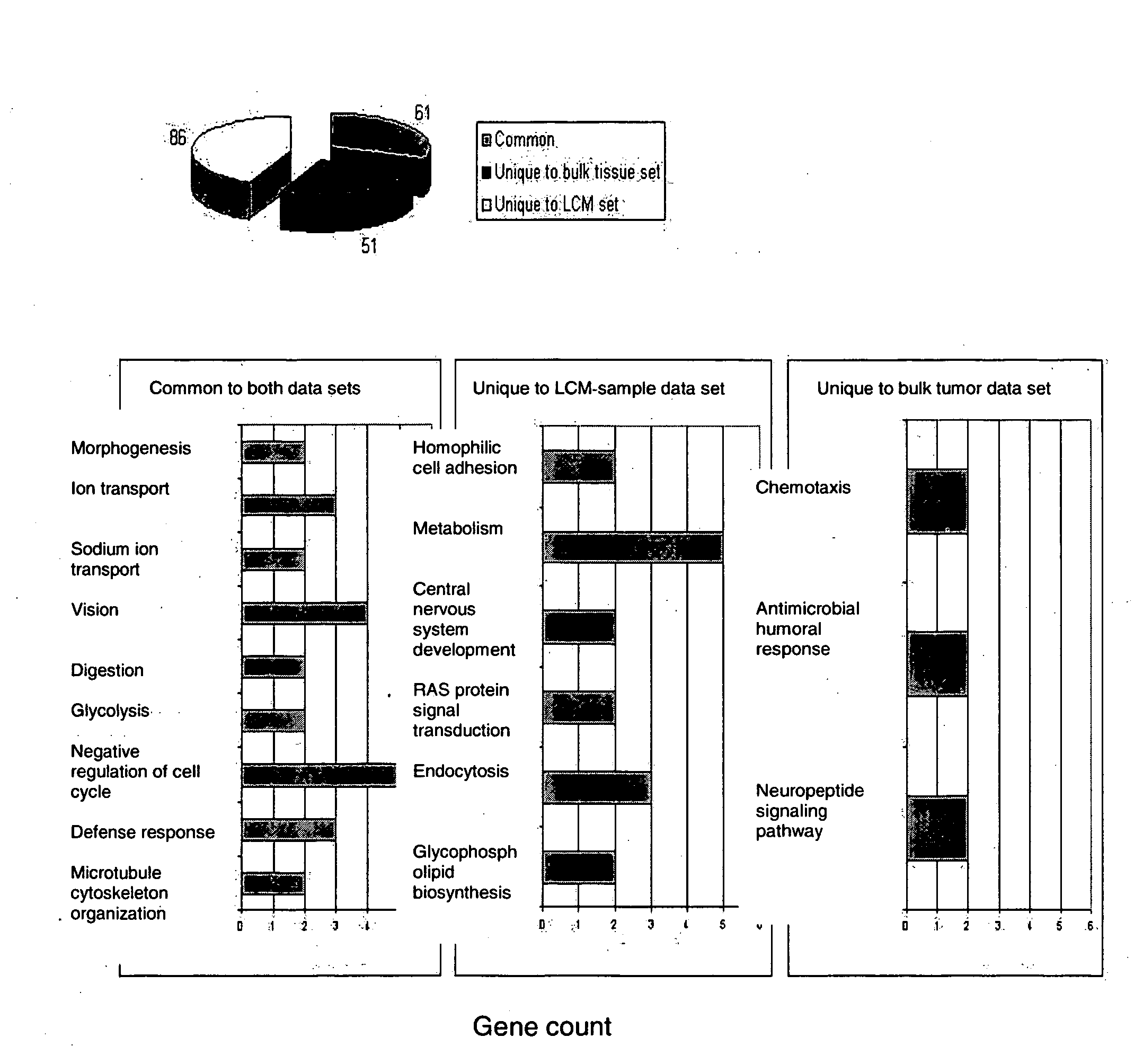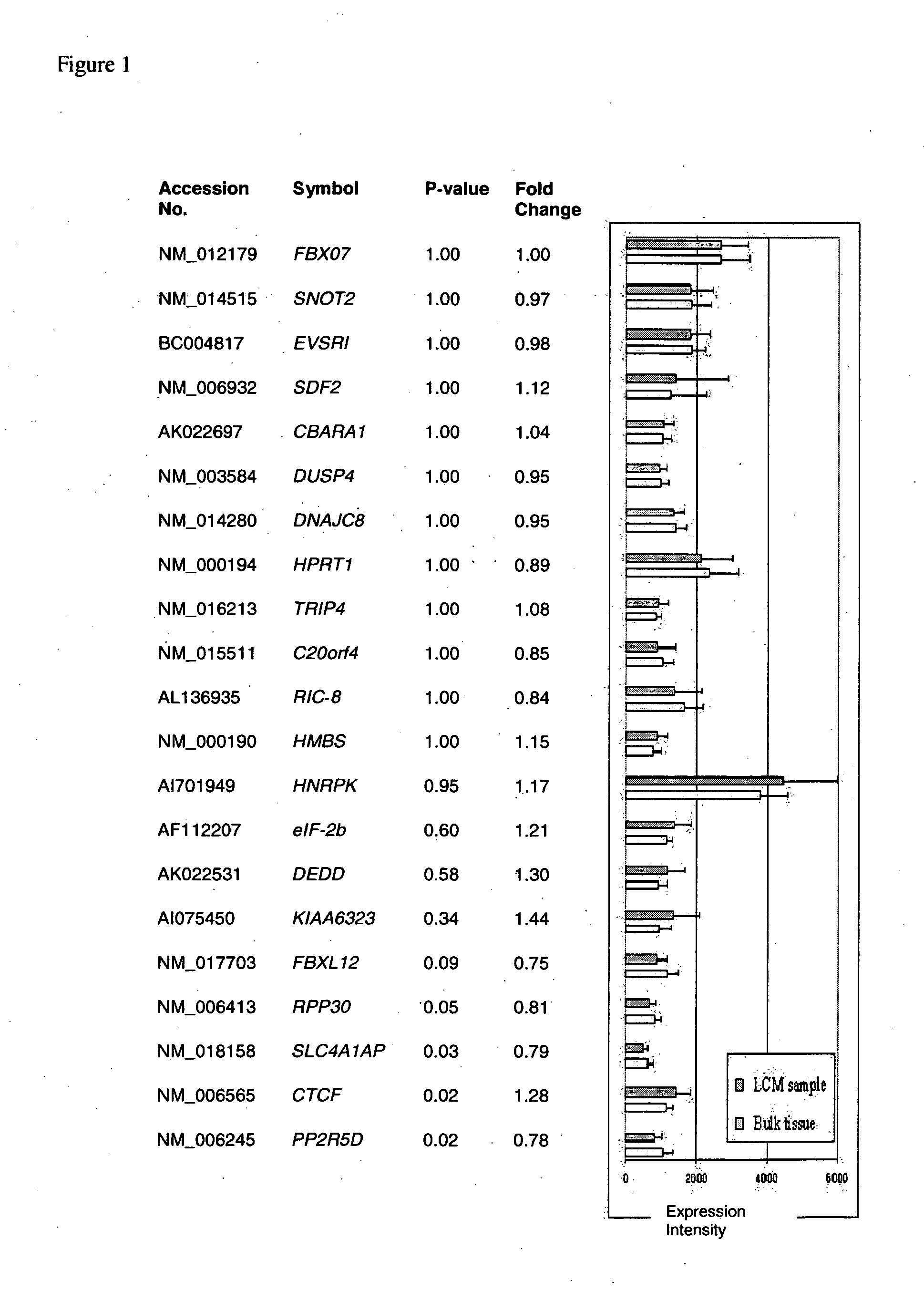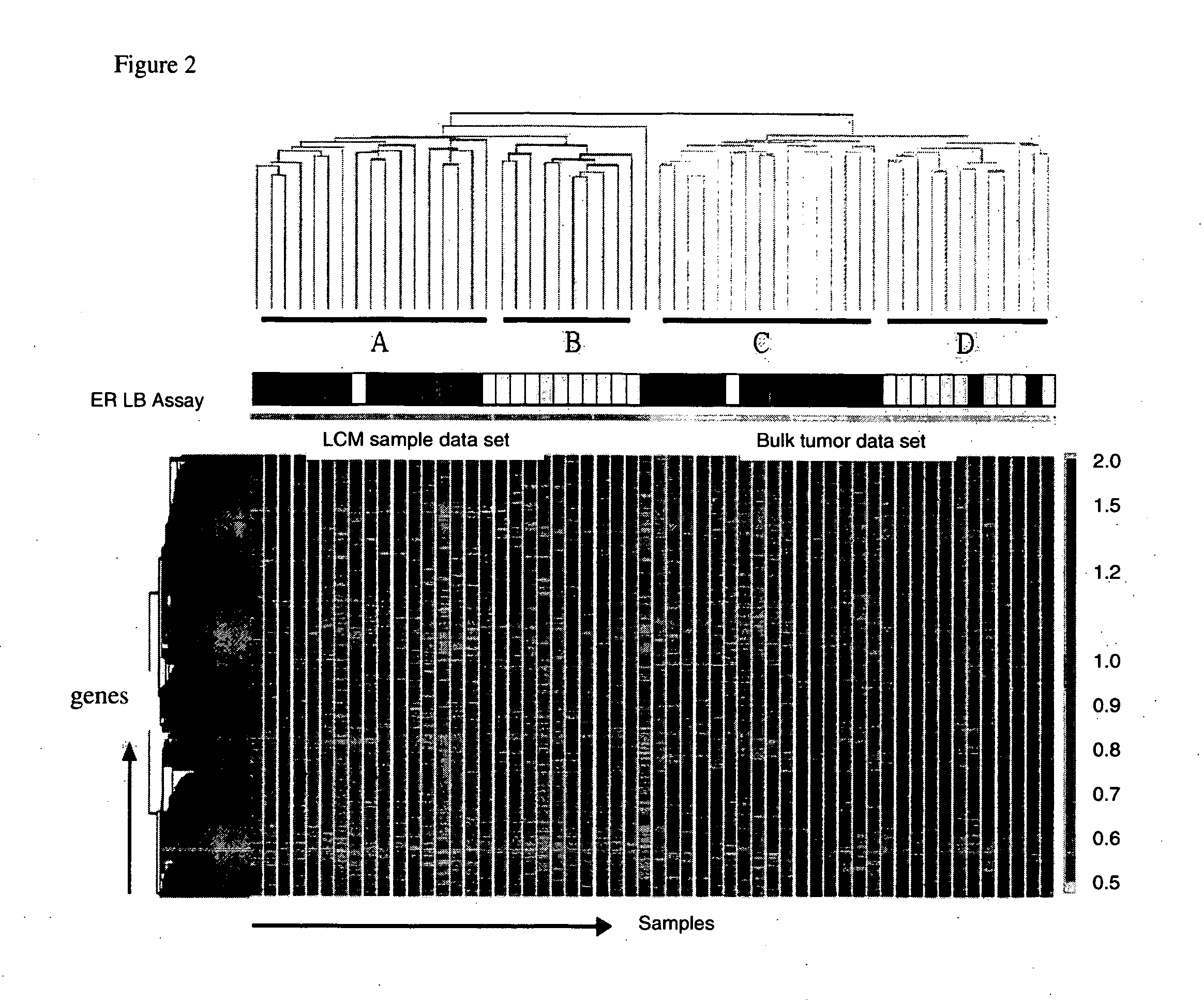Laser microdissection and microarray analysis of breast tumors reveal estrogen receptor related genes and pathways
a breast cancer and microarray technology, applied in the field oflaser microdissection and microarray analysis of breast cancer, can solve the problems of compromising the gene expression data associated with the gene, the role of cofactors, and the details of the estrogen effect on downstream gene targets,
- Summary
- Abstract
- Description
- Claims
- Application Information
AI Technical Summary
Benefits of technology
Problems solved by technology
Method used
Image
Examples
example 1
Comparison of Expression Intensities of 21 Consecutively Expressed Housekeeping Genes Between the Bulk Tumor Data Set and the LCM-Procured Sample Data Set
[0075]In order to gain insights into the mechanisms trigged by estrogen in breast epithelia cells, we applied LCM technique to a set of 28 early stage primary breast tumors that consisted of 17 ER+ and 11 ER− tumors. We then analyzed their gene expression profiles using Affymetrix GeneChip Hu133A.
[0076]Breast tumors used in this study were selected from the Erasmus Medical Center tumor bank, Rotterdam, Netherlands. These samples were submitted to the laboratory for routine assessment of steroid hormone receptor status, and stored since in liquid nitrogen. The present study in which coded tumor tissues were used was performed according to the Code of Conduct of the Federation of Medical Scientific Societies in the Netherlands. The study was approved by the institutional Medical Ethical Committee of the Erasmus Medical Center. Patien...
example 2
Unsupervised Two-Dimensional Hierarchical Clustering Analysis of the Global Gene Expression Data Using Gene Spring Software
[0080]Gene expression intensities of approximately 23,000 probe sets on Affymetrix UI 33A chip were first normalized using a quantile normalization method, then filtered using “present” call determined by Affymetrix MAS 5.0 software. An unsupervised two-dimensional hierarchical clustering algorithm was applied to the microarray data in order to group genes on the basis of similarities in the expression patterns and to cluster samples on the basis of similarities in the global gene expression profiles. As shown in FIG. 2, 56 samples (28 LCM+28 bulk tissue) were clustered into two major groups according to the source of RNA extraction: LCM-procured tumor cells and mixed cell population from bulk tumors. In each group, the samples were further clustered into two sub-groups (group A and B in LCM samples, group C and D in bulk tissue samples). As we investigated the ...
example 3
Pathway Analyses of Differentially Expressed Genes Between ER+ Subgroup and ER− Subgroup
[0081]To identify genes associated with ER status and its related pathways, we carried out T-test between the ER+ subgroup and the ER− subgroup in each of the two data sets. Using the Bonferroni corrected P-value <0.05 as a cutoff, 175 probe sets representing 146 unique genes were found in the LCM-procured sample data set and 130 probe sets representing 112 unique genes were identified in the bulk tumor data set. By comparing these two gene lists, 61 genes were found to be common, 85 genes were unique to the LCM-procured samples, and 51 genes were only present in the bulk tumor samples (FIG. 3A; Tables 2, 3 and 4). Of the 61 common genes, 36 were relatively over-expressed and 25 were down-regulated in the ER+ subgroup (Table 2). Estrogen receptor together with other genes known to be associated with ER activation, such as trefoil factors 1 & 3, GATA3, X-box binding protein 1 (XBP1), and keratin 1...
PUM
| Property | Measurement | Unit |
|---|---|---|
| Fraction | aaaaa | aaaaa |
| Fraction | aaaaa | aaaaa |
| Fraction | aaaaa | aaaaa |
Abstract
Description
Claims
Application Information
 Login to View More
Login to View More - R&D
- Intellectual Property
- Life Sciences
- Materials
- Tech Scout
- Unparalleled Data Quality
- Higher Quality Content
- 60% Fewer Hallucinations
Browse by: Latest US Patents, China's latest patents, Technical Efficacy Thesaurus, Application Domain, Technology Topic, Popular Technical Reports.
© 2025 PatSnap. All rights reserved.Legal|Privacy policy|Modern Slavery Act Transparency Statement|Sitemap|About US| Contact US: help@patsnap.com



